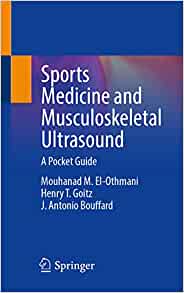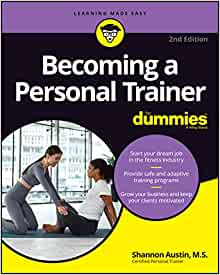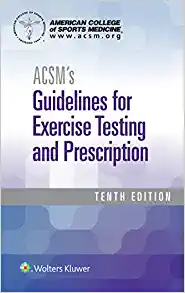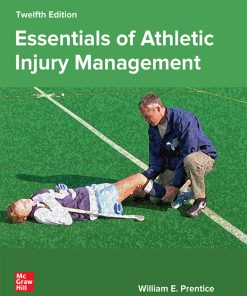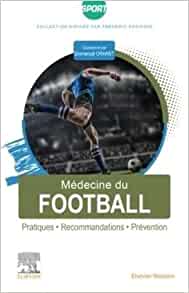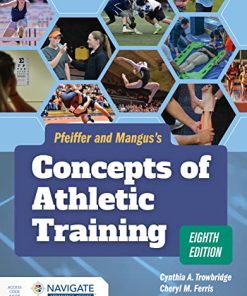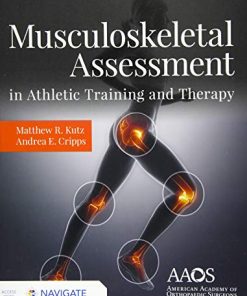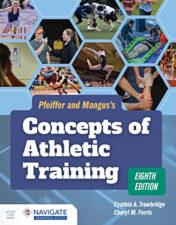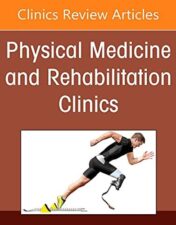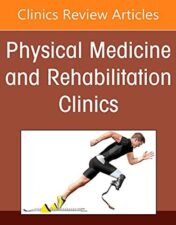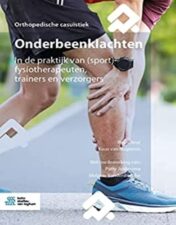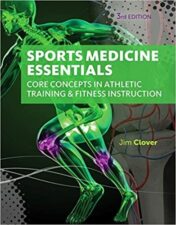Discover the Best Sports Medicine Books to Improve Your Athletic Performance
Discover the Best Sports Medicine Books at DentalBooks.net
Are you looking for the best sports medicine books to help you stay up-to-date on the latest developments in the field? Look no further than DentalBooks.net. Our selection of sports medicine books covers a wide range of topics, from anatomy and physiology to nutrition and exercise science. Whether you’re a student, a professional, or just an avid reader, you’ll find something to suit your needs. We offer books from leading authors and publishers, so you can be sure that you’re getting the most accurate and up-to-date information available. Plus, our prices are competitive and our customer service is top-notch. So don’t wait any longer – explore our selection of sports medicine books today and start learning more about this fascinating field!
Sports Medicine Books
Sports Medicine Books
Sports Medicine Books
Sports Medicine Books
Exercise and the Brain: Why Physical Exercise is Essential to Peak Cognitive Health (EPUB)
Sports Medicine Books
Sports Medicine and Musculoskeletal Ultrasound: A Pocket Guide (Original PDF from Publisher)
Sports Medicine Books
Sports Medicine and Musculoskeletal Ultrasound: A Pocket Guide (EPUB)
Sports Medicine Books
Fuel the Fire: A Nutrition and Body Confidence Guidebook for the Female Athlete (EPUB)
Sports Medicine Books
Becoming a Personal Trainer For Dummies, 2nd Edition (Original PDF from Publisher)
Sports Medicine Books
Sports Medicine Books
Sports Medicine Books
Essentials of Athletic Injury Management, 12th Edition (Original PDF from Publisher)
Sports Medicine Books
Recovery from Strenuous Exercise (Original PDF from Publisher)
Sports Medicine Books
Sports Medicine Books
Pilates For Dummies, 2nd Edition (Original PDF from Publisher)
Sports Medicine Books
Sports Medicine Books
Sports Medicine Books
Médecine de l’athlétisme: Pratiques, recommandations, prévention (Original PDF from Publisher)
Sports Medicine Books
Médecine du football: Pratiques, recommandations, prévention (Original PDF from Publisher)
Sports Medicine Books
Pfeiffer and Mangus’s Concepts of Athletic Training, 8th Edition (Original PDF from Publisher)
Sports Medicine Books
Essentials of Corrective Exercise Training, 2nd Edition (Original PDF from Publisher)
Sports Medicine Books
Musculoskeletal Assessment in Athletic Training and Therapy (Original PDF from Publisher)
Sports Medicine Books
Pfeiffer and Mangus’s Concepts of Athletic Training, 8th Edition 2022 Original PDF
Sports Medicine Books
Voeten en sport: Behandeling, preventie en verzorging (Dutch Edition) 2022 Original PDF
Sports Medicine Books
Sports Medicine Books
Introduction
Are you an athlete looking to improve your performance? Discover the best sports medicine books to help you reach your goals. Sports medicine is a field of medicine that focuses on helping athletes prevent and treat injuries, as well as improve their overall performance. With the right knowledge, you can take your game to the next level. From comprehensive guides to specialized topics, these books provide valuable insight into the world of sports medicine. Learn about the latest research, techniques, and strategies to help you stay healthy and perform at your peak. Whether you’re a professional athlete or just starting out, these books will give you the tools you need to succeed.
Understanding the Basics of Sports Medicine
Developing an Effective Injury Prevention Program
Developing an effective injury prevention program is essential for any organization or business that wants to ensure the safety of its employees and customers. Injury prevention programs are designed to reduce the risk of injuries in the workplace by identifying potential hazards, implementing safety protocols, and providing training and education to employees.
The first step in developing an effective injury prevention program is to identify potential hazards in the workplace. This can be done through a comprehensive risk assessment, which should include an analysis of the physical environment, equipment, and processes used in the workplace. Once potential hazards have been identified, it is important to develop strategies to mitigate them. This may include implementing safety protocols such as wearing protective gear, using appropriate tools and equipment, and following safe work practices.
Once potential hazards have been identified and strategies to mitigate them have been developed, it is important to provide training and education to employees. Training should focus on how to recognize and avoid potential hazards, as well as how to respond appropriately if an injury does occur. It is also important to provide ongoing education and training to ensure that employees remain up-to-date on safety protocols and procedures.
In addition to training and education, it is important to implement a system of accountability. This includes ensuring that employees are held accountable for following safety protocols and reporting any potential hazards or injuries. It is also important to provide incentives for employees who follow safety protocols and report potential hazards.
Finally, it is important to regularly review and update the injury prevention program. This includes assessing the effectiveness of the program and making changes as needed. Regular reviews will help ensure that the program remains effective and that employees are kept safe.
Developing an effective injury prevention program is essential for any organization or business that wants to ensure the safety of its employees and customers. By identifying potential hazards, implementing safety protocols, providing training and education, and implementing a system of accountability, organizations can create a safe and healthy work environment.
Improving Athletic Performance Through Nutrition and Hydration
Good nutrition and hydration are essential for athletes to perform at their best. Eating the right foods and drinking enough fluids can help athletes maximize their performance, reduce fatigue, and prevent injury.
Nutrition is an important part of any athlete’s training program. Eating a balanced diet that includes carbohydrates, proteins, fats, vitamins, minerals, and water will provide the energy and nutrients needed for optimal performance. Carbohydrates are the primary source of energy for athletes and should make up the majority of their daily caloric intake. Proteins are important for muscle growth and repair, while fats provide energy and help with absorption of certain vitamins and minerals. Vitamins and minerals are essential for proper functioning of the body and should be obtained from a variety of sources such as fruits, vegetables, dairy products, and whole grains.
Hydration is also key for athletes. Staying properly hydrated helps maintain blood volume, regulate body temperature, and transport nutrients throughout the body. It is important to drink plenty of fluids before, during, and after exercise to replace lost fluids and electrolytes. Water is the best choice for hydration, but sports drinks can be beneficial for athletes who are exercising for more than an hour or in hot weather.
In addition to eating a balanced diet and staying hydrated, athletes should also pay attention to timing of meals and snacks. Eating a meal or snack two to three hours before exercise will provide energy and help prevent hunger during activity. Eating within 30 minutes after exercise will help replenish glycogen stores and aid in recovery.
By following these guidelines, athletes can ensure they are getting the nutrition and hydration they need to perform at their best. Eating a balanced diet, staying hydrated, and timing meals and snacks appropriately can help athletes maximize their performance and reduce the risk of injury.
Utilizing Strength and Conditioning Techniques to Enhance Performance
Strength and conditioning techniques are an important part of any athlete’s training program. Utilizing these techniques can help athletes improve their performance, reduce the risk of injury, and increase their overall fitness level. Strength and conditioning techniques involve a variety of exercises that focus on developing strength, power, speed, agility, and endurance.
Strength training is one of the most important components of a strength and conditioning program. Strength training involves using resistance to build muscle mass and strength. This can be done through weightlifting, bodyweight exercises, or other forms of resistance training. Strength training helps athletes develop the physical strength and power needed to perform at their best. It also helps to reduce the risk of injury by strengthening muscles and tendons.
Power training is another important component of a strength and conditioning program. Power training focuses on developing explosive power and speed. This can be done through plyometric exercises, Olympic lifts, and other forms of power training. Power training helps athletes develop the speed and power needed to perform at their best.
Agility training is another important component of a strength and conditioning program. Agility training focuses on developing quickness, coordination, and balance. This can be done through drills, obstacle courses, and other forms of agility training. Agility training helps athletes develop the quickness and coordination needed to perform at their best.
Endurance training is another important component of a strength and conditioning program. Endurance training focuses on developing the ability to sustain physical activity for long periods of time. This can be done through running, cycling, swimming, and other forms of endurance training. Endurance training helps athletes develop the stamina and endurance needed to perform at their best.
Utilizing strength and conditioning techniques can help athletes improve their performance, reduce the risk of injury, and increase their overall fitness level. Strength and conditioning programs should be tailored to the individual athlete’s needs and goals. A qualified strength and conditioning coach can help athletes design a program that meets their specific needs and goals. With the right program in place, athletes can maximize their performance and reach their full potential.
Exploring the Latest Advances in Sports Medicine Technology
Sports medicine technology has come a long way in recent years, and it continues to evolve as new advances are made. From the use of advanced imaging techniques to the development of sophisticated prosthetics, sports medicine technology is helping athletes stay healthy and perform at their best.
One of the most important advances in sports medicine technology is the use of advanced imaging techniques. These techniques allow doctors to get a better look at an athlete’s body and diagnose injuries more accurately. For example, MRI scans can provide detailed images of soft tissues, such as muscles and ligaments, which can help doctors identify and treat injuries more effectively. Ultrasound imaging is also used to detect muscle tears and other injuries that may not be visible on an X-ray.
Another major advance in sports medicine technology is the development of sophisticated prosthetics. Prosthetics are artificial limbs or devices that can be used to replace missing or damaged parts of the body. They can be used to help athletes with disabilities compete in sports, as well as to help injured athletes recover from their injuries. Prosthetics have become increasingly sophisticated over the years, with some models being able to replicate the movements of a natural limb.
In addition to these advances, sports medicine technology has also seen the development of new treatments for injuries. For example, stem cell therapy is being used to treat a variety of sports-related injuries, including tendon and ligament damage. Stem cells are harvested from the patient’s own body and then injected into the injured area to promote healing. This type of treatment has been shown to be effective in treating a variety of sports-related injuries.
Finally, sports medicine technology has also seen the development of new technologies to monitor athletes’ performance. Wearable sensors can be used to track an athlete’s heart rate, breathing rate, and other vital signs during training and competition. This data can then be used to help coaches and trainers adjust an athlete’s training program to maximize performance.
Overall, sports medicine technology has come a long way in recent years, and it continues to evolve as new advances are made. From the use of advanced imaging techniques to the development of sophisticated prosthetics, sports medicine technology is helping athletes stay healthy and perform at their best.
Conclusion
Sports medicine books can be a great resource for athletes looking to improve their performance. They provide valuable information on nutrition, injury prevention, and recovery techniques that can help athletes reach their goals. With the right book, athletes can learn how to maximize their potential and stay healthy while doing so. Whether you’re a professional athlete or just starting out, there is a sports medicine book out there that can help you reach your goals. Discover the best sports medicine books to improve your athletic performance today and take your game to the next level.





